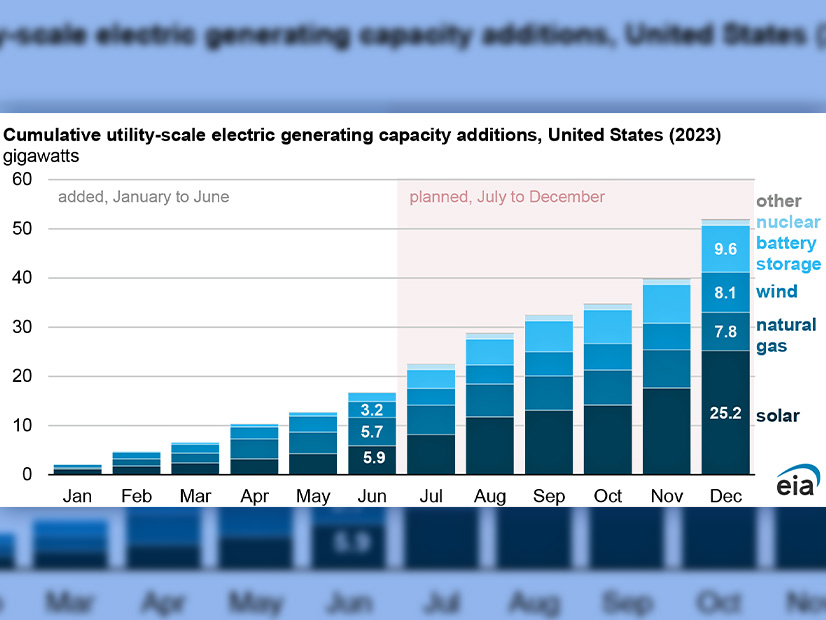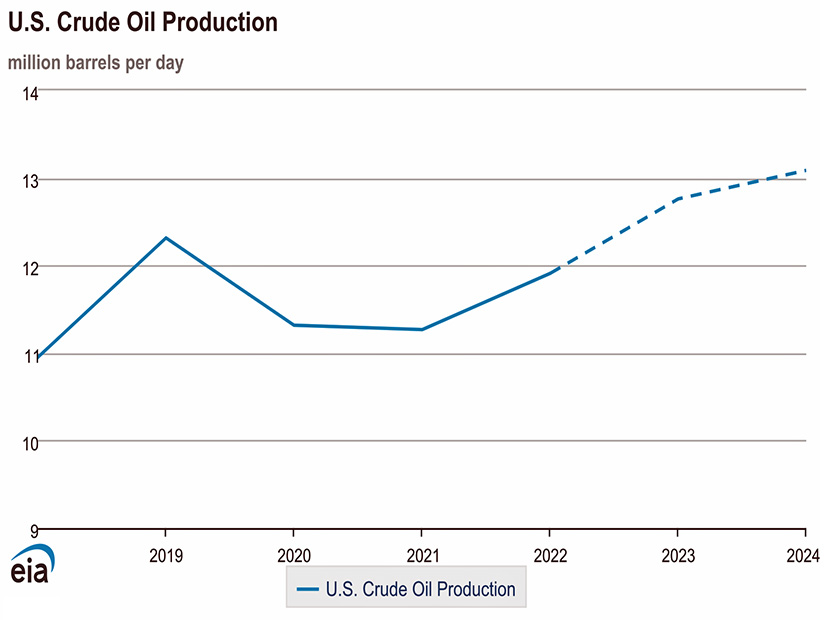
Competing pictures of the U.S. energy transition were drawn Tuesday, as federal reports showed soaring solar power output and domestic crude oil production poised to set a record.
In its latest inventory of electric generation capacity, the Energy Information Administration said that 5.9 GW of solar came online in the first half of 2023 and that the figure would have been much higher but for supply chain constraints.
EIA also reported that it expects sustained global demand for petroleum to drive U.S. crude oil production above 12.9 million barrels a day for the first time this year and above 13 million in early 2024.
The solar data were drawn from EIA’s preliminary Monthly Electrical Generator Inventory for June. The report inventories utility-scale generating facilities, defined as those with a nameplate capacity of 1 MW or greater.
It showed that 5.9 GW of new solar came online in the first six months of 2023, along with 5.7 GW of natural gas-fired generation, 3.2 GW of wind power and 1.8 GW of battery storage.
At the start of 2023, developers and planners reported that they expected to build 10.5 GW of solar in the first half of the year but fell far short of that projection, largely because of shortages or delays in obtaining materials.
Two large gas-burning plants — the 1,836-MW Guernsey Power Station in Ohio and the 1,214-MW CPV Three Rivers Energy Center in Illinois — accounted for more than half the new natural gas nameplate capacity in the first half.
Most of the new battery capacity was in Texas and California; the Moss Landing battery energy storage facility in California became the nation’s largest as expansion nearly doubled its capacity to 750 MW.
Delays in construction of battery facilities in the first half were even greater than in solar: 3.1 GW of planned storage construction was pushed back to the second half of the year.
The total 16.8 GW of new capacity in the first half of the year was countered by the retirement of 8.2 GW of existing generation capacity, almost all of it coal and gas. The second half of 2023 is expected to see 35.2 GW added, bringing the totals for the year to 25.2 GW of solar, 9.6 GW of storage, 8.1 GW of wind and 7.8 GW of natural gas.
The second half is also expected to see the continued exit of coal from the U.S. fuel mix. Total coal retirements in 2023 are expected to reach 9.8 GW, or 5% of the existing coal-fired fleet at the start of the year.
Crude Output
Even as emissions-free generation capacity is being built, lakes of petroleum are still being pumped out of the ground, refined and burned.
The EIA on Tuesday also released its August Short-Term Energy Outlook, which bumped the prediction for average daily crude oil production 200,000 barrels a day higher than the July outlook. That puts it in record territory for the U.S.
The “why” is simple: because there’s money to be made on the global market, as demand persists amid Saudi Arabia’s production cutbacks.
The global benchmark Brent Crude started July at $74.52/barrel and ended the month at $85.22, EIA reported. The agency expects it to reach $90 this year.
“We forecast continued growth in domestic oil production, which is bolstered by higher oil prices and higher well productivity in the near term,” EIA Administrator Joseph DeCarolis said in a news release Tuesday announcing the outlook.
The U.S. likely approached a single-month record for electricity consumption in July, according to the report, as temperatures soared and air conditioners hummed. EIA estimated Americans used 388 billion kWh last month.
Coal use is expected to drop sharply from 513 million short tons in 2022 to 410 million this year, while natural gas is expected to generate 42% of the U.S.’ electricity this year. Other large sources are projected to be nuclear (19%), coal (16%), wind (11%), hydro (6%) and solar (4%).




